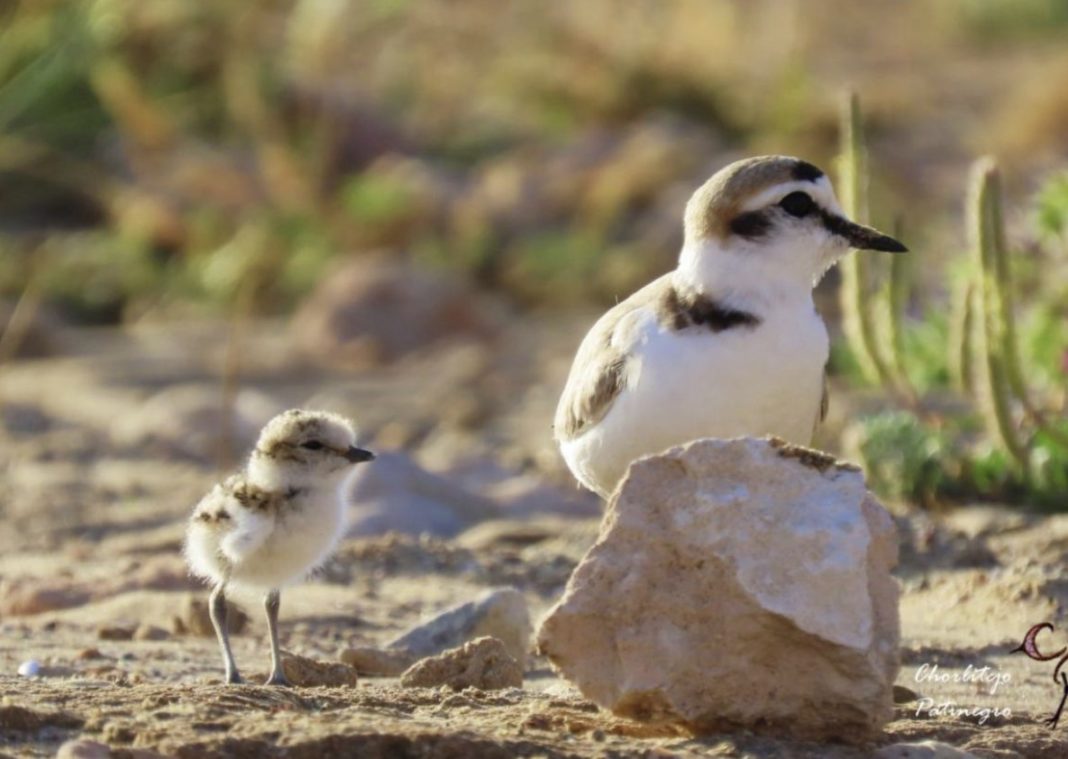- Experts warn that La Mata beach has recorded fewer nestings of this bird since the pandemic due to the presence of loose dogs.
When humans leave, nature takes back the areas that were taken from it. It seems like a cliché, but Torrevieja, without raising a finger, had the opportunity to test it first-hand during the pandemic.
In the past, when beaches were not the crowded spaces they are now, dune flora and fauna were much richer in plant life and species. One of the successes was the Kentish Plover (‘Charadrius alexandrinus’), a bird that is seriously threatened by the lack of virgin sandbanks in which to place its nests.
When covid emptied the banks of La Mata, the bird was once again able to breed in peace. Eleven chicks were born next to the Molino del Agua municipal park in 2020 and 13 in 2021, numbers not previously seen, even more so if you consider that in 2019 not a single hatchling was produced.
That unusual precedent laid the foundations for the much more serious protection of this small bird in the Torrevieja district. The part of the sandy area – the furthest from the sea – where they like to nest their eggs was marked, the mechanical cleaning of the sand and the collection of algae were stopped to facilitate their access to food. However, the plover did not return to that same accommodation that it enjoyed in times of the pandemic. There were eight births in 2022 and two in 2023, extremely disappointing when you consider the efforts that were made.
Nevertheless, in March the period of special protection for this bird began once again on La Mata beach. The warning signs, wooden posts and ropes returned to the area closest to the Molino del Agua. And the bird was given the opportunity to reproduce without the attention of bathers.
BIRTHS PER YEAR
2018 1 pair, 1 nest and 2 chicks hatched.
2019 No nest, no birth registered.
2020 5 pairs, 5 nests and 11 chicks hatched.
2021 4 pairs, 6 nests and 13 chicks hatched.
2022 3 pairs, 3 nests and 8 chicks hatched.
2023 1 pair, 1 nest and 2 chicks hatched.
The municipal biologist, Juan Antonio Pujol, together with Estefanía Alonso, promoter of the Kentish Plovers project, are responsible to ensure that this bird’s stay in the salt city is as comfortable and peaceful as possible. Pujol, well known on social networks for his Facebook page ‘Natural Chronicles of Torrevieja’, recognizes that the influx of bathers has an impact on the plover, hence the attempt to keep them away from the nesting areas.
However, he emphasizes, “what causes the most damage are loose dogs. During the early mornings and last thing in the day their presence is very negative. The birds consider them a potential predator,” says the conservationist from the Department of the Environment.
The ordinance and the current regional law restrict access to these animals, but, according to the data, it is clear that any vigilance is insufficient.
If La Mata stops being a site appreciated by this unique bird, the Laguna Rosa and La Mata would remain as nesting spaces in Torrevieja. In this area, it is the workers of the natural park managed by the Generalitat who are responsible for carrying out the task that Pujol and Alonso undertake for the City Council.
A week ago, the Council published a statement to notify of the arrival of the breeding period for the grosbeak. It called for public collaboration stating that “it would allow the adoption of similar procedures that, once their effectiveness has been proven, could be used in other parts of the coastline with similar characteristics.”
Torrevieja, more accustomed in the past to serious attacks on nature, also wants to be a reference in environmental management and La Mata offers it less urban pressure to also develop the reintroduction of plant species typical of the dune forest; the other major project championed by the City Council in this sense.
Pujol, meanwhile, has also asked for protection of the plover in neighbouring municipalities, including some in the Region of Murcia. The biologist recently got his boots muddy, with the help of ANSE, in detecting nesting areas in the reeds of the Mar Menor. He says that this area along with Cabo Cope are the last important reservoirs of the bird in the Region.
“Populations are also declining there,” he says sadly. Although he admits that his task is “difficult”, the biologist does not give up on his efforts. “We carry out campaigns in schools and, for the first time, this year there are guided routes scheduled where all the environmental values of the Molino del Agua are explained,” says Pujol without a hint of weakening in his noble and green appeals.





